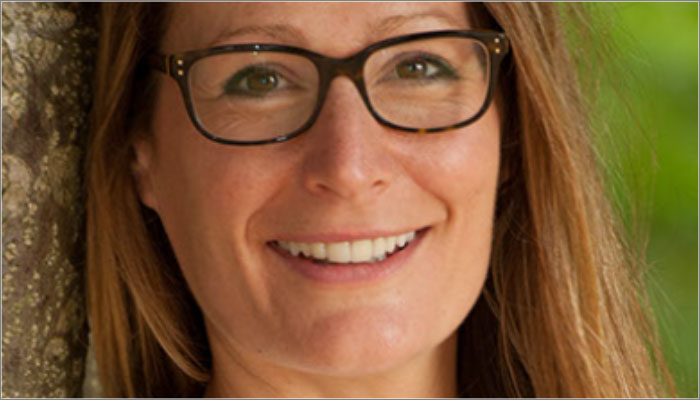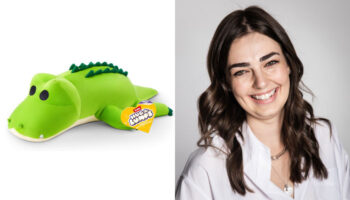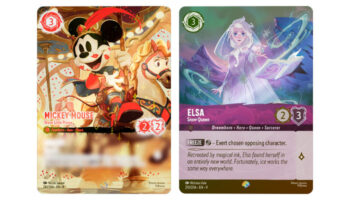Products of Change’s Helena Mansell-Stopher on why designers play a key role in making the toy industry more eco-friendly

Having worked at the likes of Marvel Entertainment, Mattel and most recently at National Geographic, Helena Mansell-Stopher is now a leading figure in the industry’s fight to be greener as curator and director for the Sustainability in Licensing Conference and founder of the Products of Change group.
We caught up with Helena to learn more about the Sustainability in Licensing Conference – taking place this November – and what role the toy and game design community have to play in help the industry become more eco-friendly.

Hi Helena. To kick us off, could you tell us a little of your history in the world of toys and licensing?
Yes, I started my licensing journey at HIT Entertainment, many years ago back when it was still a privately owned company of the late Peter Orton. I started in the publishing department working closely with the brand creators at HOT Animation, the author and illustrators of the book properties such as Angelina Ballerina, as well as selling international publishing rights globally.
Over the years I have managed multiple product categories at Marvel and Entertainment Rights, I headed up the UK & Nordic consumer products team at Mattel for over 8 years, headed up all retail and business development at Bulldog Licensing driving toy brands such as Shopkins, and most recently was head of UK consumer products at National Geographic.
Last year you founded the Products of Change think-tank; a group of licensing professionals who meet up to discuss how the industry can improve its sustainability and facilitate changes. What prompted the assembly of Products of Change, and is there scope for toy and game designers to get involved?
As National Geographic was so heavily linked through to the National Geographic Society, I started learning in-depth the effects we have on the planet and shockingly how little time we have to turn this problem around.
We built both a creative and brand activation plan centred around bringing products to market that were better for the environment but were also profitable in driving business growth. During the process it became apparent that licensees wanted to change practices, but there was little knowledge on how to do this; the ‘Products of Change Group’ was formed by my wanting to pass on the knowledge I had learned as well as learn from others in ‘educating to inform change’.
If we are to minimise our impact on the planet then we need to re-design how we use products and a core element of this is to ‘design out waste’; we have to look at the end user of a product and understand how the product can be disassembled to re-use parts. Design is one of the largest solutions to this huge problem we have.
That’s a great thing for the design community to hear. But why specifically do you feel toy designers and inventors should be playing an active part in these kinds of discussions?
90% of global toys are made from plastic, and while they are not a single use plastic, a huge portion of their packaging is and it’s having a devastating effect on the planet. Plastic is, however, a wonderful material; cheap, light weight, versatile, strong and if you pick the right one can be recycled.
We need to find a ‘middle ground’ between using plastic when necessary (it’s lighter to transport thus saving on carbon emissions versus heavier materials) and researching new materials and plastics to create toys from. Redesigning packaging is key in delivering a more sustainable toy business; whether removing the ‘air’ from it or not adding plastic coating to it, there’s a lot that can be done while new materials are developed.
I also feel the circular economy can have a huge impact here. Imagine a future that enables you to send toys back to the manufacturer who then break the parts down to make new toys from the materials. If toys are designed to be re-used or re-cycled with as little mixed material as possible, then we don’t have to take ‘new raw’ materials from the ground to make new toys. This means the materials we use for new toys could be recycled material which would have a positive impact on the environment.
With a growing population, the demand for products is due to increase so we need to figure out how we continue to supply the demand but in a more environmentally and socially fair way.

Absolutely. And time is of the essence; so how fast is the toy space moving in the right direction when it comes to sustainability? And what needs to be done to speed things up?
When you compare the toy space to, say, the fashion space, it has been slower to react, but only slightly.
Throughout 2020 we have seen many larger companies state their intention. This is the first step; recognising things have to change. The important thing is to now track their progress to make sure the change happens and hopefully they will share their ‘best practice’ so that the smaller toy companies can benefit from the findings too and help push change quicker.
We are also seeing some fantastic innovation coming through from smaller companies such as Play Press with their cardboard construction toys. They have also reduced packaging significantly and use packaging as part of the play pattern.
You then have larger companies such as Mega Bloks with their bio-based plastic (sugarcane). LEGO are also extremely committed to being more sustainable and have been on this journey the longest out of all the toy manufacturers.
So change is happening, but if we are to accelerate this change we need to be transparent and share best practice.
And that’s where the Sustainability in Licensing Conference comes in! You’re the Conference Director for that event. What sparked the need for it and is it something the toy and game design community should be attending?
The Sustainability in Licensing Conference came from my organising more outside companies to speak at the Products of Change Group meetings, and it became apparent that learning from outside the industry was going to be key if we were going to evolve as an industry.
The group is made of up 78 members, but if we are going to drive larger systemic change in the industry then I need to educate more people, so the SILC conference was born….
The conference will provide a knowledge across many areas including designing out waste and the circular economy, so yes, it is very relevant for the game and toy design community and I would love to see some of the Mojo Nation community attend the conference.
I’m sure they will! We should say that it takes place on November 25th at The British Library, and more info can be found at www.sustainabilityinlicensing.com. A huge thanks Helena – and good luck with the event.
—-
To stay in the loop with the latest news, interviews and features from the world of toy and game design, sign up to our weekly newsletter here
























